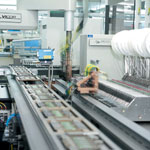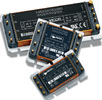
Contemporary power designers routinely search the websites of module manufacturers seeking solutions and to buy online. Most suppliers have a product selector function that enables designers to enter say, input voltage, output voltage and power level to specify the product they need.
Some selectors work better than others, but the fact is that most suppliers of power modules make only a limited set of in-demand parts, mainly with 48 V or 24 V input. This means that the product selector is just that: a means to help a prospective buyer select an existing product.
Now, an online suite of advanced power design tools from Vicor called PowerBench is in place, enabling power designers to specify and verify the performance and attributes of custom power design solutions in realtime. The comprehensive tool suite exploits Vicor's mass-customisation capability, enabling design engineers to apply their expertise to maximising the performance of their applications, rather than working around the constraints imposed by off-the-shelf, commoditised power supplies.
PowerBench has several independent expert-system modules that allow users to configure or design DC-DC converters, converter arrays or complete AC-DC and DC-DC power systems. The remainder of this article will focus on the DC-DC module design capability.
Typically, a designer looking for a solution would begin with Vicor's library of over 290 base electrical designs covering five different input ranges, eight or nine output voltages, three package sizes and multiple power levels. After selecting the appropriate base design, the designer can configure the design with any of six pin styles, three base-plates and five environmental grades. A part number, price and lead-time are then generated by the system.
When an order is placed for that part, the back end of the process is completely automated. The order triggers a bill of materials (BOM) generator to run and create this variant of a base design. The base electrical design and everything else - such as pins and base plates - is configured around it automatically.
When the BOM is created, everything is in place for the build, and the design takes its place on the production line. No standard modules are in stock; each is built on demand resulting in a four-week lead time. An order for a part that has not previously been manufactured can still be fulfilled within four weeks. In fact, small quantities of these base model designs with five different input ranges and eight or nine output voltages, and different power levels and package sizes can be done in two weeks.

The component of PowerBench which enables user-defined designs, allows the customer to input a set of requirements such as low-line input, high-line input, nominal input and output voltage within broad limits. So for example, the designer can enter an input voltage of 2 V to 48 V or anything in between. There is no restriction on specific outputs - an unusual voltage of 13,5 V for example, is possible - although there are some restrictions in terms of the ratio between a high-line voltage and a low-line voltage. Users can select anything from 18 V up to 420 V.
After defining the critical specifications of the module, the user then runs a Feasibility Check. This is a realtime analysis of the requirements by a sophisticated expert system that creates multiple designs that would meet the required specifications. If the optimal system-generated design is determined to be feasible, the user can generate a part number and a price.
If an order is placed for this module, part of the expert system named the Automated Bill of Materials creates, simulates and scores as many designs as it can to meet the user's requirements. The optimal design is then selected and dispatched to the production line.
This new module is built just like any other modules on the production line on that particular day. In-line testing during production is done using test specifications created by the design generator and passed automatically to the CIM line.
Once the initial batch of modules is completed and tested, they are sent to Engineering where they are subjected to Device Verification Testing. This is another automated system that subjects the module to thousands of different tests to characterise its performance and verify that the design meets the stringent internal design rules. The engineer will also perform some bench testing and data gathering, which is used to continually improve the expert system's capability to generate new designs.
The whole platform, the Mini/Maxi/Micro platform (Figure 2), was developed to be highly customisable, so that bespoke designs can be generated and built without any interruption to the manufacturing line. These modules do not have to undergo additional qualification tests such as life testing or shock and vibration testing because they are built on the same platform as standard modules using the same qualified components. The standard products have undergone extensive life and environmental testing to ensure the quality of design and manufacture, and these new designs are qualified by similarity.


© Technews Publishing (Pty) Ltd | All Rights Reserved